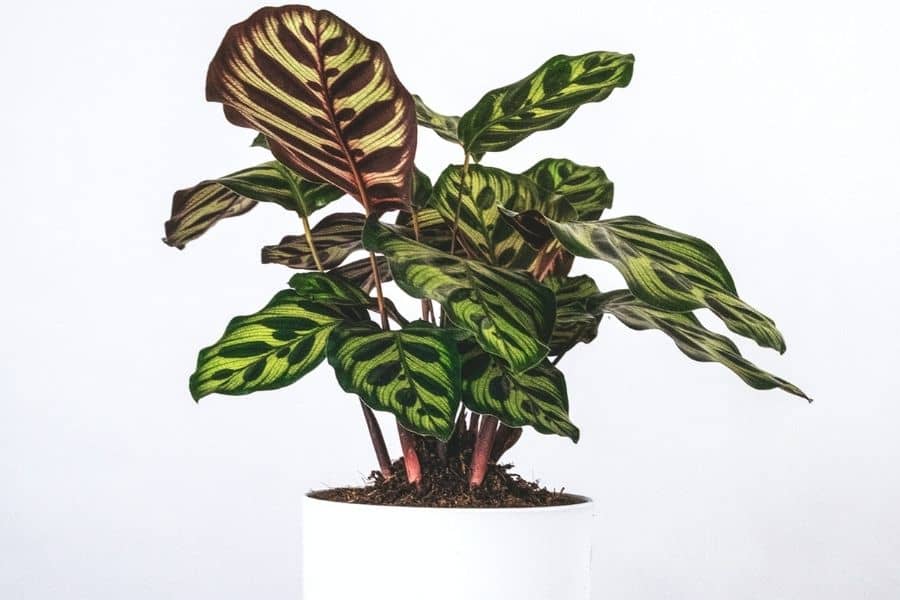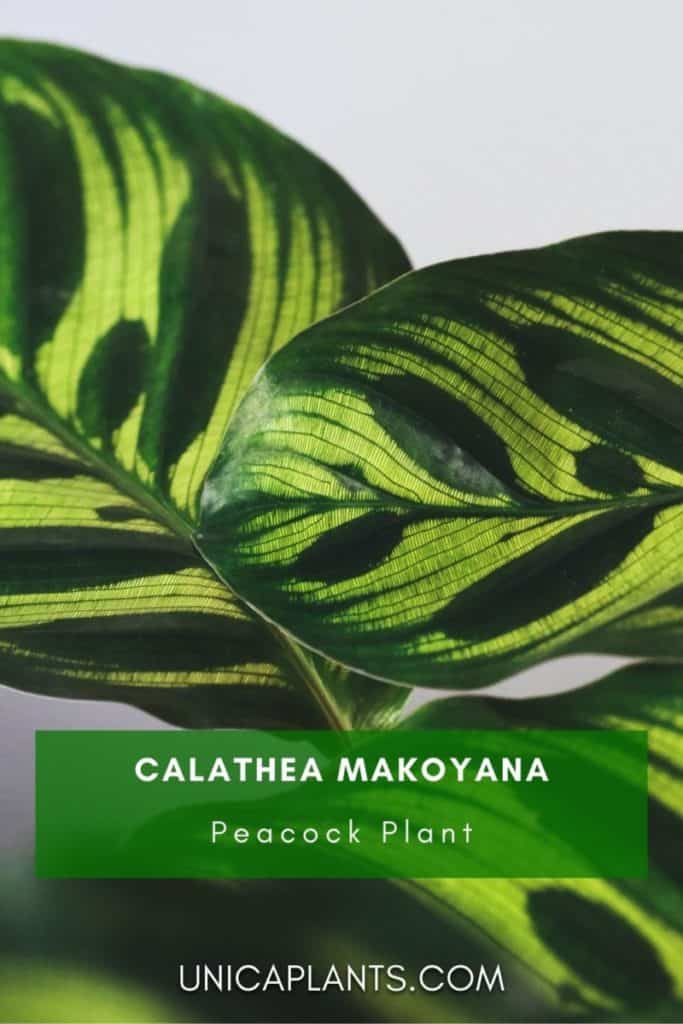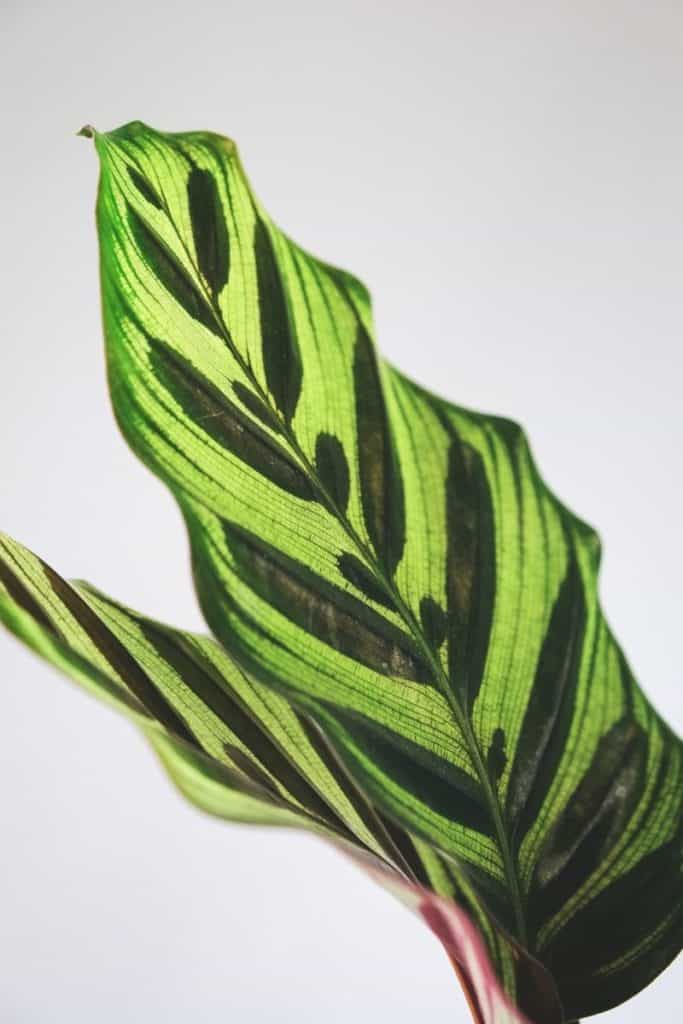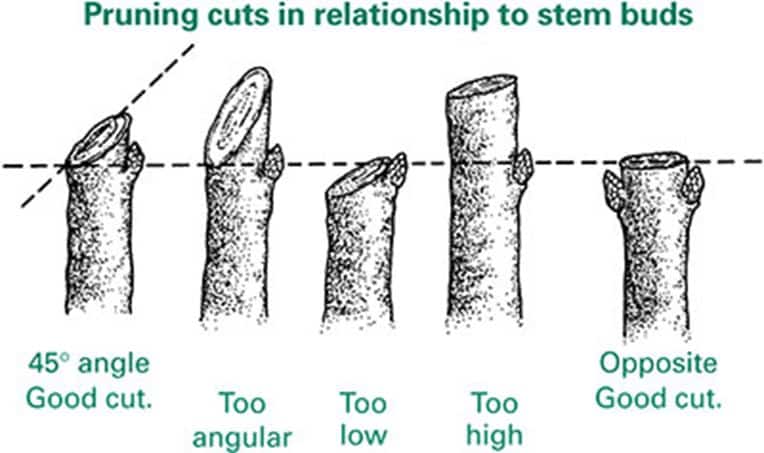
The Calathea makoyana is known for its big colorful leaves with unique patterns of green, dark green, red, and sometimes purple. It is also known as the peacock plant or cathedral windows. The top of the transparent leaves are green with dark green details, while the underside of the leaves have a purple hue to them. If you look closely, you can see the underside shining through at the top of the leaf. This plant will make a great addition to your indoor garden collection. Just like the other Calathea plants, the Calathea makoyana also has specific needs when it comes to watering and humidity. To fully understand this plant, here's a complete Calathea makoyana care guide, including how to water the plant, the best soil to use, what environment it likes, and how to propagate it.

Summary:
- Light: Bright indirect sunlight
- Water: Water regularly, keep the soil moist but not soaked
- Soil: Soil needs to drain as well as retain (peat & perlite mix)
- Size: The plant grows up to 2' (0.6 m) tall
- Size: The plant's leaves grow up to 12" (0.3 m) wide
- Zone: 11 (minimum 40°F | 4.4°C)
- Cold hardy: Not cold hardy
- Propagation: By division or seeds
- Toxicity: Not toxic to humans and pets
Contents
General Care for Calathea makoyana (Peacock Plant)
The Calathea zebrina is a great houseplant but can be pretty hard to take care of if you are a houseplant newbie.
Watering
The peacock plant can be a drama queen as to water and humidity needs. If the plant gets too little water, the leaves are going to hang, and eventually will dry out. If you give too much water and have soggy soil all the time, there is a big chance that the roots will start to rot and the plant will slowly die.
With the Calathea makoyana, you want to make sure that the soil is always a little bit moist, not soaked, but moist. Best is to check the soil twice a week and stick your finger 1" (2,5 cm) deep into the soil to feel if it's dry or moist. If the soil feels dry, it's time to give the plant some water.
The Calathea makoyana also likes to grow in an environment where the humidity is high. To mimic this environment, you can mist your plant once or twice a week with water. You can do this with a mist machine or with a spray bottle filled with water.
Where to Plant
The peacock plant is not cold hardy, so if you live in a zone that gets colder than 40°F (4.4°C) it's best to put this plant in a container. If the weather is going down in the winter months, you can bring the plant indoors.
Plant in an area that gets a lot of bright light, but avoid direct sunlight.

How to Propagate Calathea makoyana (Peacock Plant)
Propagating Calathea makoyana can easily be done by division. It can also be done by seeds, but this is the more difficult way.
Division
The Calathea makoyana naturally grows little bundles of roots with stems and leaves growing out of it. If it's time to repot the peacock plant (in spring), you can carefully divide the plant to propagate it. First, you want to wait for the plant to grow strong and healthy. When you want to divide it, get the plant out of its pot, and carefully remove the soil from the roots.
If the soil is removed and you can clearly see the roots, you want to carefully divide the roots. Make sure before you do this, the plant is big enough to be divided.
After you have cut away the dead and damaged parts of the roots (if there are any), you can pot each division separately in a pot with the right soil mix (for example ⅔ peat moss & ⅓ perlite).
Lastly, you want to put a zip bag over the two pots with the divisions to provide a moist environment for the stem to grow in (mini-greenhouse). place the pot with the bag over it in a place where it receives bright indirect sunlight.
If you see new growth (usually after a month) you can remove the zip bag and now you have two beautiful peacock plants.
Seeds
This is the more challenging way to propagate the Calathea makoyana, but it's possible! First, you want to buy seeds from a trusted supplier...
Then, you want to make a soil mix of 1:1 ratio with peat and coarse sand and fill a small planter or propagation tray with the soil.
Now you can plant the seeds 0.5" (~1cm) in the soil. After that, water the seeds lightly and put a plastic bag over the containers. Next, put the pots with the plastic bag in a spot that gets lots of bright indirect sunlight and keep the soil moist.
In addition, you want to add a heat mat under the containers to keep the seedlings warm. The heat will improve the germination success rate.
After a couple of months, when the seedlings are 2" (5cm) tall, carefully transplant them into bigger pots without damaging the roots.
Voila! You have now successfully propagated the peacock plant!



Leave a Reply